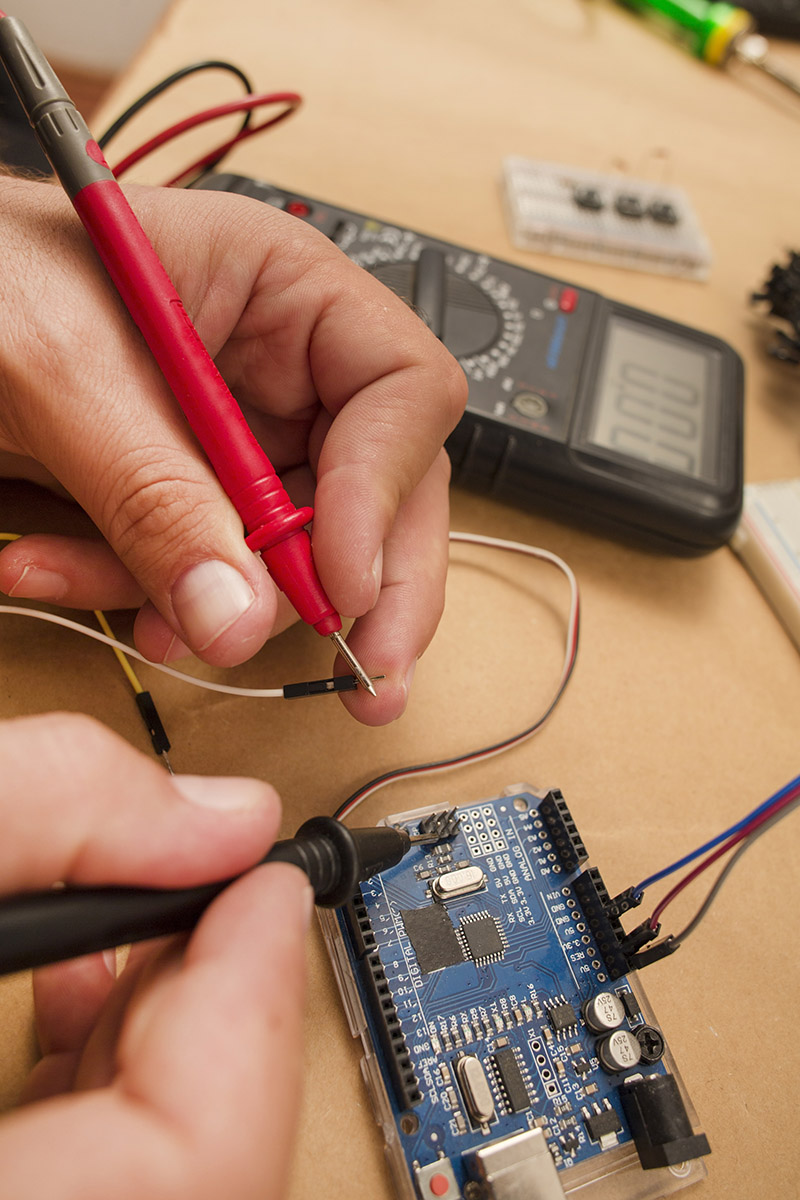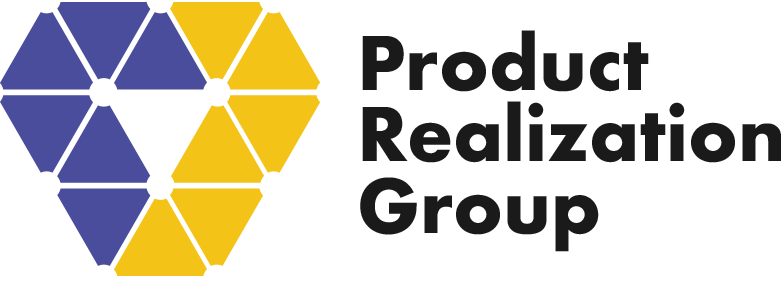by Product Realization Group
Hardware does not have to be hard, but there are many obstacles to navigate successfully in order to bring an electronic product to market. In this article, we share with you various ways to surpass the biggest obstacles in your path to market.

Problem #1: Last Minute (read costly) Design Changes
New product development is difficult and can be chaotic. If changes are made last minute, delays, cost overruns, and other problems can seriously affect the success of the new product.
Solution #1: Use Concurrent Engineering
Concurrent engineering ensures that a high quality product is built at the lowest possible cost.
Assign an experienced NPI project manager who owns driving the project. This individual defines the NPI schedule including deliverables, task linkage, due dates, and owners.
Assemble the NPI team. NPI is comprised of cross-functional resources from marketing, engineering, operations, quality, finance, and service. All functions should be involved early on in the product development process.
Follow an agile hardware development process leveraging project management software and hardware sprints to help keep the project on track, mitigate risks and ensure key decision points.

Problem #2: Regulatory Ignorance
We can’t get around standards and regulations. These requirements are critical for shipping products in volume, but are often overlooked or minimized. Failure to fully understand numerous regulatory requirements can stop a product from getting to market.
Solution #2: Learn & Adhere to Standards and Regulations
Define your strategy for regulatory compliance based on your industry and product profile. Leverage knowledge from regulatory experts and direct communications with regulatory bodies. Incorporate compliance requirements early in the design phase, and employ automated business systems to manage compliance records.
Typical bodies include:
Food and Drug Administration (FDA)
Underwriters Laboratory (UL)
European Conformity (CE)
Federal Communications Commission (FCC)
International Electrotechnical Commission (IEC)
International Standards Organization (ISO)
Military Standards (MIL
Define your strategy for environmental compliance with directives based on your industry. Common environmental compliance for high-tech electronics include:
- Evaluation, Authorization and Restriction of Chemical Substances (REACH)
- Restriction of Hazardous Substances (RoHS)
- Waste Electrical and Electronic Equipment (WEEE)

Problem #3: Risk Naïveté
You ignore risks of developing a new hardware product at your peril. Commercializing a new product is filled with risks:
- Market Risk – customers don’t want your product, it lacks key features, or it’s not competitively priced.
- Technology Risk – your great design may not be “cutting edge” but is actually “bleeding edge” and your product fails.
- Regulatory Risk – are you compliant with the many government agencies in the United States and Internationally?
- Supply Chain Risk – where are you going to buy your components? Have you considered issues such as relying on a sole source, obsolescence of components, long lead times, and changing costs?
- Manufacturing Risk – manufacturing can be difficult. A design that is hard to assemble and test creates a high defect rate, or is impossible to test, and can doom your product.
Solution #3: Mitigate Risks
- Focus on basic product requirements and features.
- Perform feasibility studies early.
- Develop a product roadmap and set realistic timelines.
- Use risk assessment tools such as Failure Mode and Effect Analysis (FMEA).
- Since risks can take varied and subtle forms, consider building a cross-functional team. Involve the team early on and encourage open communication.
- Choices made early by engineering can affect a product for a long time. A solid NPI process can ensure manufacturing and service teams can live with those choices.

Problem #4: Ad Hoc Design
You may have a good vision and a clear sense of what the marketplace wants, but creating a great product is something else altogether. New designs often fail by following the classic under-resourcing and over-engineering trap of many technology companies.
Correct balance is a challenge in every new product introduction. Designing a minimum-viable product, and iteratively improving your design based upon market feedback may help to mitigate market and development risks.
Solution #4: Leverage Rapid Prototyping
New manufacturing techniques allow you to quickly and cost-effectively see what the product will look like and how it will function.
The cost and lead times for this technique are so favorable that you have the ability to make new designs daily.
Here are a few ways you can leverage this method:
- Shape analysis for fit, ergonomics, appearance.
- Use “disposable” assembly tooling, when they wear out, just grow more.
- Use component fitting for both internal and external enclosure designs.
- Perform air flow testing for cooling or other functional aspects.
- Use for mechanism concept testing, normally a very time consuming process.

Problem #5: Silo Engineering
Engineers who work in “silos”, communicate poorly with other areas and miss critical information. This can increase development costs and the risk that designs are not manufacturable, have high product costs, or do not meet regulatory requirements.
Solution #5: Deploy Scalable Business Systems
Deploy systems early to support rapid development of the product, customer relationships, orders, materials management, financials, quality management, and smooth data flows between OEMs and outside partners.
Systems include:
- Computer aided design for electrical, mechanical (CAD)
- Customer Relationship Management (CRM)
- Product Lifecycle Management (PLM)
Use these best practices:
- Develop an end-to-end systems strategy that includes outsourced partners.
- Plan time and budget for process definition before systems implementation.
- Plan time and budget for user training after implementation.
- Automate data exchange between systems.
- Allocate skilled resources for ongoing support.
- Develop Statements of Work and Service Level Agreements.

Problem #6: Design (Just) for Prototype
Research engineers commonly don’t involve other functional areas in the prototyping process. As a result, designs may miss many real-world problems such as component obsolescence, technology that can’t scale, unrealistically high costs, features that aren’t wanted by customers, and designs that are difficult to manufacture or test.
Solution #6: Employ Design for Excellence
Employ Design for Excellence (DFX) is the umbrella term for designing high quality products that can be cost effectively built, tested, shipped and supported.
DFX typically includes:
- Design for Cost
- Design for Reliability
- Design for Procurement
- Design for Manufacturing
- Design for Test
- Design for Logistics
- Design for Service
Use DFX methodologies during key development transitions points:
- Concept (DFX) Engineering Verification Test
- Engineering Verification Test (DFX) Design Verification Test
- Design Verification Test (DFX) Process Verification Test
- Process Verification Test (DFX) Volume Manufacturing

Problem #7: Don’t Prototype = Don’t Learn
Some companies speed product development and fail to follow a solid industry-best-practice “stage-gate” process. The risks of bringing products to market without a few iterations deprives your team of important lessons that can result in serious marketability, quality, functional, and scalability problems.
Solution #7: Learn from Feasibility, Prototype, and Pilot Builds
Costs for mistakes escalate rapidly from feasibility to prototype to pilot to full production. By implementing best practices, processes are optimized for volume production.
First timers tend to struggle because the “don’t know what they don’t know” and so underestimate what is required. We have found that an experience Technical Program Manager (TPM) can provide the expertise and guidance needed to create and drive a realistic schedule.
For more information about New Product Introduction, please contact us at the Product Realization Group.
Found value in this read?
Dive deeper! For more essential tips on mitigating risks in New Product Introduction, don’t miss our article, “10 Critical Warning Signs Your New Product Development Is At Risk.”


